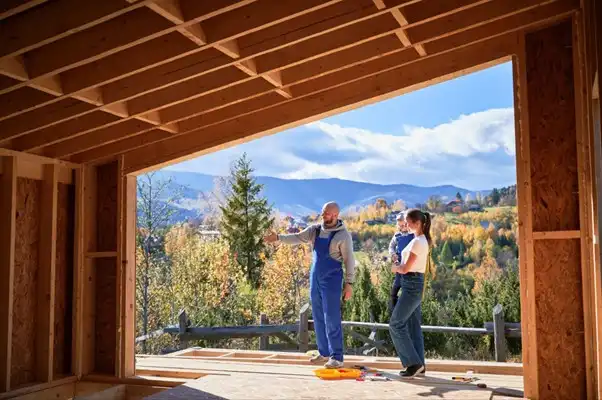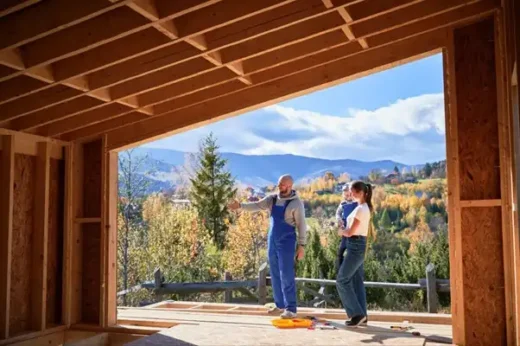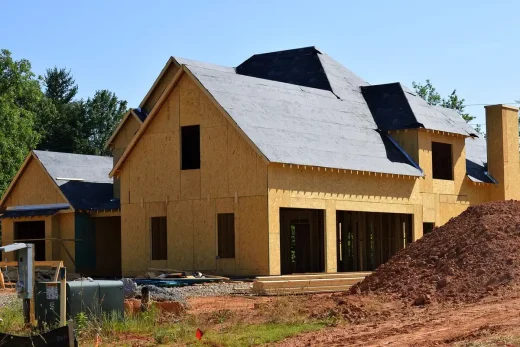How to customise a house and land package advice, New custom house building funds, Homeowners guide
How To Customise a House and Land Package
May 10, 2025
If you’re on the hunt for a new home, you’ve probably come across house and land packages. They can take a lot of the stress out of the home-buying process, but one question that comes up a lot is: can I actually customise it?
Let’s take a closer look at how much flexibility you really have with a house and land package and what’s possible when it comes to making it your own.
Understanding House and Land Packages
A house and land package is exactly what it sounds like – a bundle where you buy a block of land and a brand-new home in one streamlined process. These packages are usually offered by developers or builders who have already secured land in growing suburbs or newly established estates.
One of the big reasons they’re so popular is because they take a lot of the legwork out of building your own home. Instead of finding a block, then sourcing your own architect, builder, and managing the entire project, a house and land package simplifies everything.
You choose the lot, pick from a range of home designs, and the builder takes care of the rest. Most packages come with pre-designed floor plans and a selection of building fronts and finishes.
This approach can be more cost-effective than building completely from scratch and it often comes with fewer surprises along the way. Which is a huge bonus if you’re new to the building process.
Standard Inclusions and Pre-Set Designs
The thing to know is that most packages come with a set of standard inclusions, which usually cover everything from the basics, like a driveway and fencing, to the interiors.
Because the home designs are pre-set and pre-approved by local councils, the process is generally faster and more straightforward than starting from scratch. You won’t need to worry about getting separate approvals or making structural decisions that can delay your build. It’s all about streamlining the journey to your new home.
That said, not all packages are created equal. Different builders offer different levels of inclusions – so it’s worth paying close attention to what’s on offer.
Customisation Options
While house and land packages are all about making the process easy that doesn’t mean you’re locked into a one-size-fits-all solution. In fact, many builders offer some level of flexibility so you can make your new home feel more you.
Let’s break down the ways you might be able to personalise your package.
Structural Changes
Some builders give you the option to modify the floor plan, which can be a game-changer when it comes to creating a home that truly suits your lifestyle.
You might want to adjust the size of certain rooms to create a more open feel in the areas you use most, or make your main bedroom a little more spacious and inviting. If you’re someone who loves to cook or entertain, rethinking the layout of the kitchen or bathroom can make your daily routine feel smoother and more enjoyable.
There’s also the option to include additional spaces, like a dedicated home office or an alfresco dining area, which not only enhances how you use your home now but can also add long-term value.
Fixtures, Finishes and Colour Schemes
While the floor plan might be largely pre-set, most builders offer a selection process for fixtures, finishes and colour schemes that allows you to shape the final result to suit your style.
Here’s how it generally works: once you’ve chosen your lot and home design, you’ll be invited to a selection appointment, often referred to as a “colour appointment” or “selections day.” This usually happens at the builder’s design studio or display centre, where you can see, touch and compare all the options available.
You’ll walk through different zones of the home and choose from a curated range of materials and finishes, all of which are pre-approved to suit the design and budget of your chosen package.
Depending on the builder and your budget, you may be offered a standard inclusion range, as well as upgrade options if you’re after something a little more high-end. Think choosing between laminate or stone benchtops, selecting cabinetry colours and handles, picking your flooring (tiles, hybrid planks, carpet), deciding on wall colours and choosing your tapware and lighting fixtures. Some builders even offer style boards or themes to help guide you through the process, which is great if you’re not sure where to start.
While you’re not designing every detail from scratch, this part of the journey gives you a surprising amount of creative control. And best of all, because everything is part of the builder’s offering, the selections you make are incorporated into your contract and managed as part of the overall build.
Upgrades and Extras
Once you’ve settled on the basics of your new home, you’ll often have the chance to explore optional upgrades that take things up a notch. Upgrades are typically presented during your selections appointment, or outlined in upgrade packages by your builder.
In our experience this depends on the builder. You might be offered a menu of options to choose from, or be guided through different “tiers” of inclusions that bundle popular upgrades together.
This can include higher-end kitchen appliances, stone or timber benchtops for that polished finish, or premium flooring choices like hardwood, terrazzo. Even underfloor heating in cooler climates.
Tech-savvy buyers often opt to include smart home features – think automated lighting, climate control, security systems, or even integrated speakers. Outdoor upgrades help you make your own peaceful patio with extras like a timber deck, a built-in BBQ, or professionally landscaped gardens that are ready to enjoy from day one.
It’s worth noting that these upgrades will add to your overall cost, but they can be a worthwhile investment. Especially if you’re planning to live in the home long-term or want it to stand out in the market down the track.
Limitations to Customisation
It’s helpful to go into the process with a clear understanding of where the boundaries are. Not everything can be changed, and there are a few common limitations that most buyers will come across.
So first we need to mention your new home still needs to meet local zoning laws and building regulations. These are in place to make sure the property is safe, structurally sound and fits within broader community planning rules. While you might have big ideas for a rooftop garden or a two-storey extension, these kinds of changes might not be possible – or may require additional red tape that adds time and cost.
Most estates also have developer design guidelines that aim to keep a consistent look and feel throughout the neighbourhood. These can cover everything from rooflines and fencing to exterior colours and landscaping.
The goal is to maintain visual harmony across the estate, and while that’s all well and good to help protect the long-term value of your home, it also means you may not be able to go completely off-script with your design choices.
Making changes to floor plans or choosing high-end finishes can push your total spend beyond what you’d planned for. Being clear on your must-haves versus nice-to-haves early on can help you stay within budget without sacrificing the things that really matter to you.
It’s worth remembering each builder will have their own policies about what they’re willing to modify. Some are more flexible with structural changes, while others might only allow cosmetic tweaks like finishes and fittings.
Considerations When Customising
One of the biggest things to think about is resale value. While it’s tempting to design everything exactly to your personal taste (and you should), it’s also worth thinking ahead.
Super specific features (like a sunken lounge, ultra-bold colour schemes, or unconventional layouts) might suit your lifestyle perfectly, but they can make it harder to attract buyers down the track if you ever decide to sell.
Changing standard designs or upgrading materials often adds extra steps to the process, from redrawing plans to ordering special finishes. If you’re working to a particular move-in date or rental timeline, it’s worth factoring in those potential delays.
And finally, our strongest piece of advice is to always check how your changes could affect your builder’s warranty. Some modifications, especially if they involve structural changes or non-standard materials, might fall outside of what the builder typically guarantees.
Having a clear conversation about this upfront means no surprises later and helps ensure your dream home build comes with the peace of mind you deserve.
Turning a Standard Package Into Your Dream Home
At the end of the day, choosing the right builder can make all the difference.
Customising a house and land package should feel exciting (not overwhelming) and the right partner will guide you through the process with transparency and care. Take the time to research your options, compare inclusions and ask how flexible they really are when it comes to changes.
A builder who listens to your needs and works with you collaboratively is key to creating a home that’s not only beautifully built but thoughtfully yours.
Comments on this guide to How to customise a house and land package article are welcome.
+++
Sustainable Homes
Sustainable Home Design
Green sustainable housing: nature house
Bamboo flooring sustainable homes
+++
Home Design
Home Design Articles
Comments / photos for the How to customise a house and land package advice page welcome.







